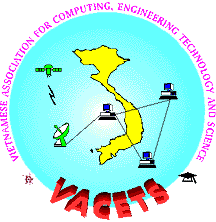It took me
many years to buy a car with a cruise control option, I just could not
see the benefit. Now, I can't live without it. Zipping down the Interstate
95, I couldn't understand why it took me so long to decide on getting such
an useful option. For goodness sake, the car practically drove by itself.
Well, my friends,
be prepared, because you ain't see nothing yet. Mandated by Congress through
the 1991 Intermodal Surface Transportation Efficiency Act, the Automated
Highway System (AHS) technologies are required to be demonstrated by the
end of 1997. Described briefly as the component Advanced Vehicle Control
Systems of the Intelligent Vehicle Highway System (IVHS) in an article
published in this column a few weeks ago, AHS technologies will allow cars
to travel literally bumper-to-bumper at highway speeds without the need
for driver control. While the Automated Vehicle Location and Navigation's
goal, another IVHS component, is to build "smart cars" (see the
article "Do you know your way to San Jose?"), the AHS's is to
produce "smart highways".
AHS lanes
will have sensors, computers, and communications devices to automatically
control the vehicles. Adaptive cruise control slows a car down when it
gets too close to the car in front of it, and sensors on the road keep
the car in its lane. GPS will be an integral part of the system's navigation
and control features. AHS lanes will be integrated with normal highways
where vehicles are controlled by drivers. AHS promises to transform collections
of passive thoroughfares into smart, responsive systems adept to control
commuter patterns, to respond swiftly to medical emergencies, to manage
interstate commercial trucking, to make public transportation more efficient,
and to help motorists drive better.
The Federal
Highway Administration (FHWA) recently selected the National Automated
Highway System Consortium (NAHSC) to develop a prototype for a future AHS.
The FHWA awarded the consortium 80 percent of an estimated $200 million
AHS development costs. The consortium must come up with the other 20%.
Lead by Delco Electronics Corporation, NAHSC members include General Motors
Corporation, Bechtel Corporation, Hughes Aircraft Corporation, Martin Marietta,
the California Transportation Department, and others.
With such
heavy hitters in the line-up, AHS will be here soon enough. But there are
many challenges ahead. Building an infrastructure will be a huge undertaking
and probably will take decades and billions of dollars to implement. Then,
there are lots of social and legal issues to overcome: antitrust, patent,
liability, right to privacy, and regulatory and jurisdictional constraints.
Just a few
years ago, we can only dream. But it probably will not be long before none
of us will need to learn how to drive: door-to-door driverless car service
is destined to be part of our lives. Needless to say, this old engineer
will try not to be the last one to get that option this time around.
Viet-Dung
Hoang, Ph.D.
[email protected]
For
discussion on this column, join [email protected]
Copyright
© 1994 - 1997 by VACETS and Viet-Dung Hoang
:
